Fashion designers need to showcase their talent not only to get work but also to get admission to top fashion design institutes. This means you must prepare a portfolio of all your fashion design projects.
Usually, after completing a fashion design course, you have multiple projects to upload, but for a fresher or someone willing to take admission to a college is difficult.
Therefore, we have shared 10 easy DIY fashion design projects you can try at home and share the final results on your portfolio.
Best DIY fashion designing project ideas for students
Fashion design project ideas at a glance
1. Upcycled denim shorts
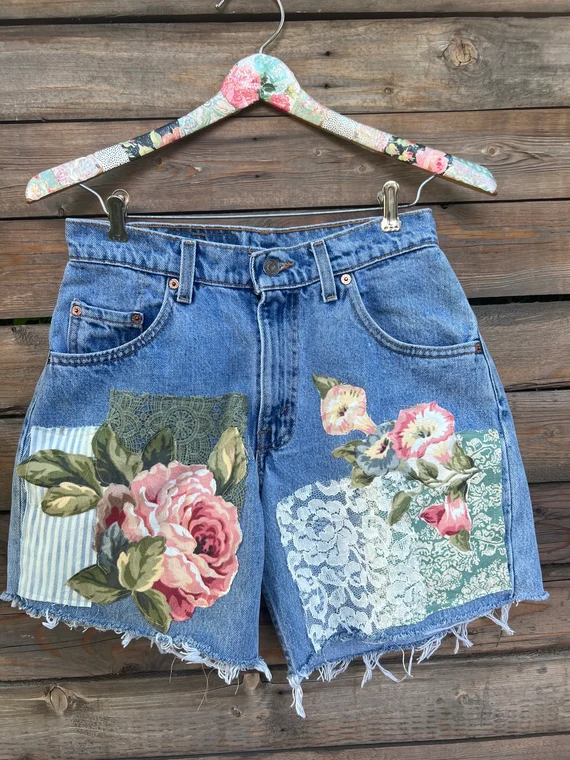
What this is about: This project is about creating fashionable denim shorts from old denim jeans.
Ways to implement this project:
- You can take old denim jeans and cut off its legs to the size you want for the shorts
- Then, you add patches and embroidery to make it look trendy
2. Hand-painted T-shirt
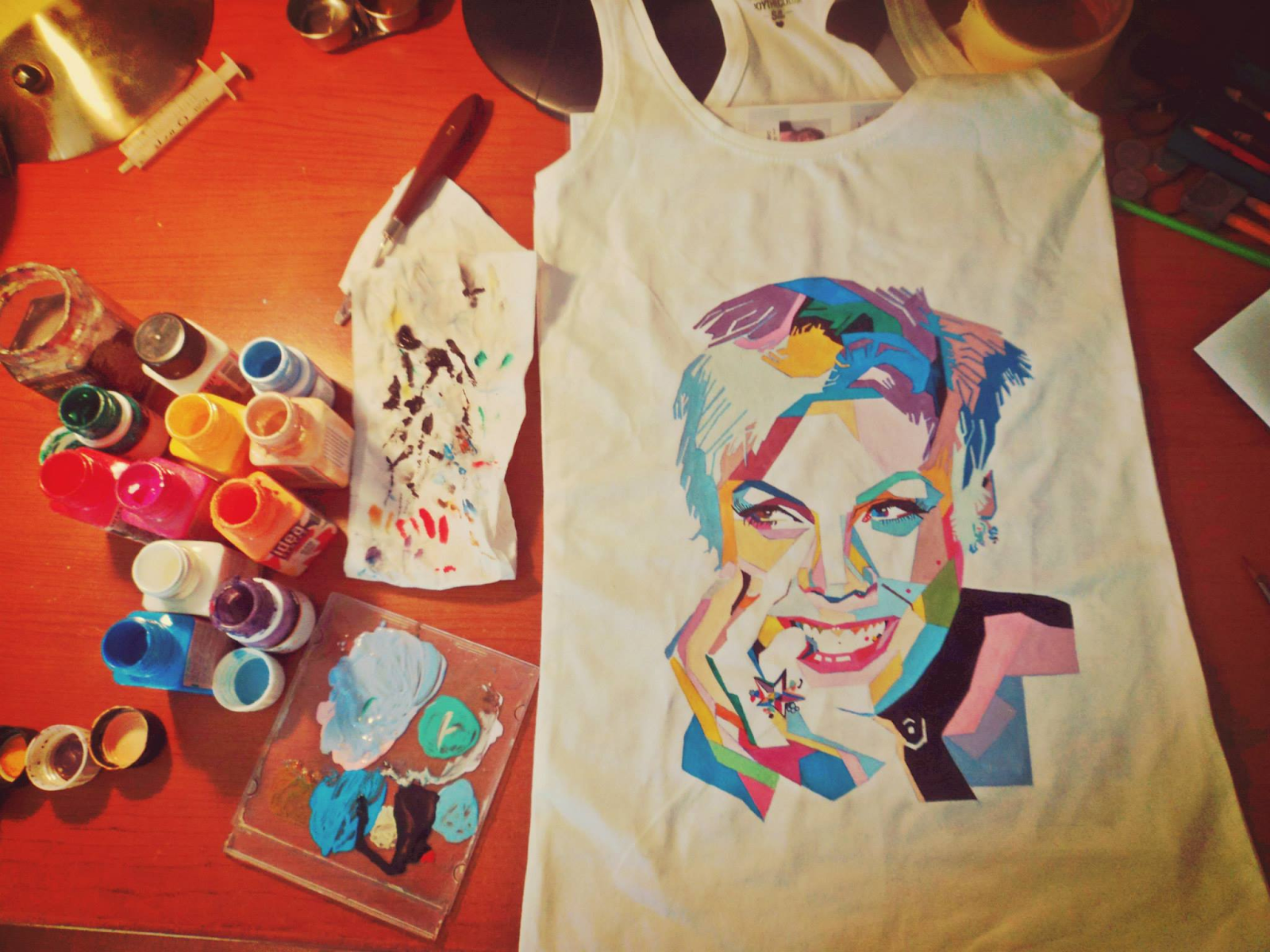
What this is about: This project will showcase your creativity and artistic skills. You will hand paint different designs on plain cotton t-shirts.
Ways to implement this project:
- You can take some plain cotton T-shirts
- Draw any design on the t-shirt like human structure, quotations, cartoons, abstract models, etc.
- You then paint your design using fabric paints and dry the shirt.
3. Patchwork on Denim jacket
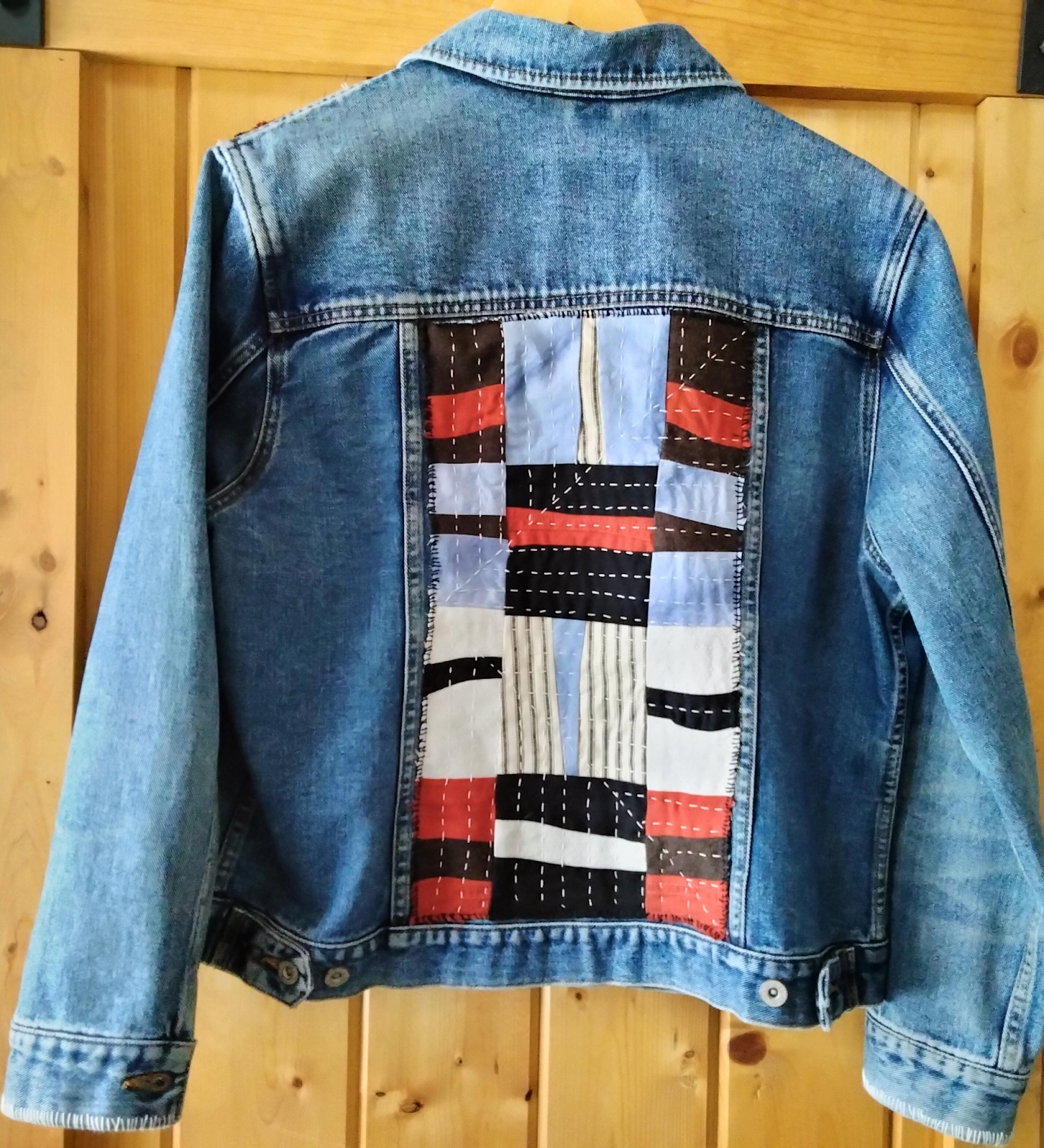
What this is about: This project is about designing your boring denim jacket with funky scrap fabric for a trendy look.
Ways to implement this project:
- You must get a jacket, scrap fabric in cotton, and a piece of a T-shirt graphic
- The scrap fabric needs to be cut into equal-sized squares and sewed them 4-6 pieces in a row
- Make four strips with the scrap fabric, and sew them by keeping the T-shirt graphic in between
- Then attach the whole patch behind your jacket and make it look trendy
4. Suede Fringe skirt
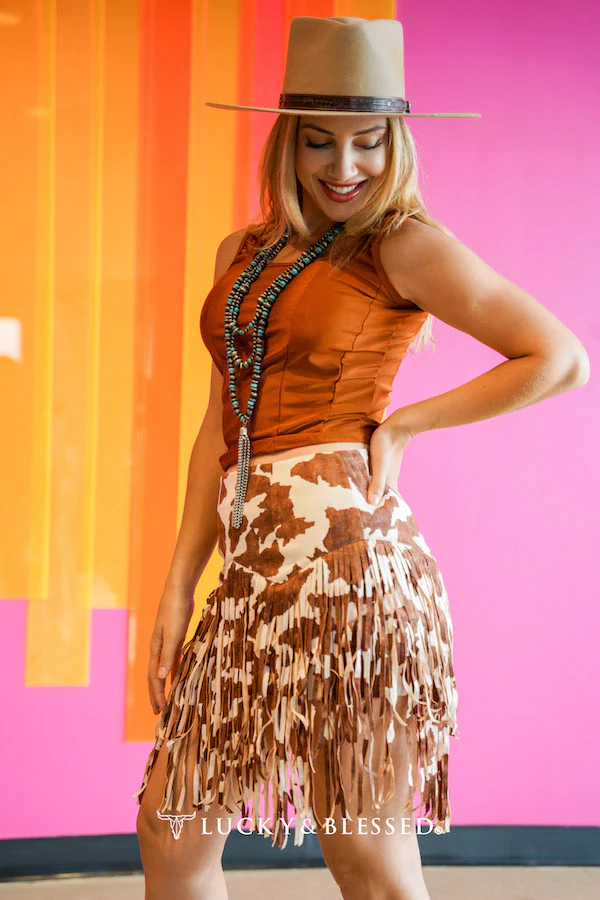
What this is about: This project is about adding fringes to an ordinary skirt.
Ways to implement this project:
- Take a faux suede fabric as wide as your model’s hips, measuring 24” × width of the model’s hips + 2”
- You can then mark out ¼” × 9” fringe at the bottom of the hip-width side and cut the fringe along that line
- Add darts to the back of the skirt about 4” from the edge of the fabric to create a curve around the bum
- Then fold the top edge of the fabric and sew about 2” to create the waistband
5. Cross-stitch sweater
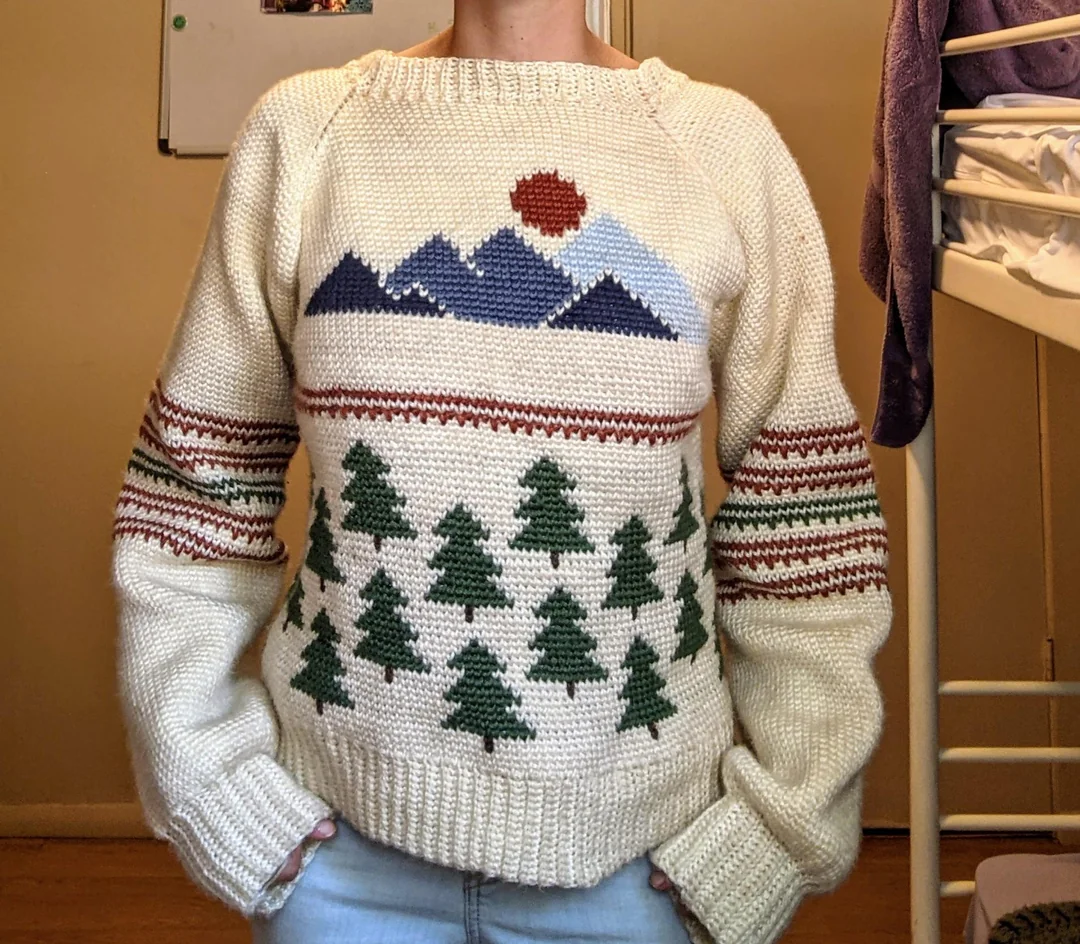
What this is about: This project is about making cross-stitch designs on a normal sweater.
Ways to implement this project:
- You need a sweater, yarn, and yarn needle
- Draw your design with a washable fabric marker on the sweater
- Starting from inside the sweater and following the design pattern, stitch in an X pattern
- Continue making Xs till the entire design is made, and use as many colour yarns as you want to make the sweater look trendy
6. Tie Dye Dress
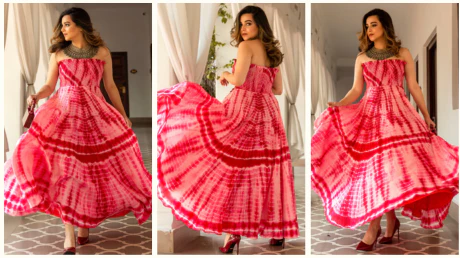
What this is about: This project is about recreating a simple cotton dress with tie-dye painting.
Ways to implement this project:
- You must buy a simple cotton maxi dress and a tie-dye kit
- Firstly, pre-wash the dress to remove sizing, and dry it without a dryer sheet or fabric softener
- Then, fold the dress in a desired tie-dye pattern and secure it with rubber bands at every 2 inches
- Check the tie-dye kit direction before applying it to the dress, and wrap it in a plastic bag for the directed period
- Remove the band, wash the dress, and dry it thoroughly
- Finally, to make it look pretty you can add embroideries.
7. Applique work on Kurta

What this is about: This project is for intermediate fashion designers. It showcases your artistic and creativity skills when you design a simple kurta with applique work.
Ways to implement this project:
- You will first choose a simple kurta, wash it clean and dry it
- Then pick a layout of your design, draw on paper or take a printout, and sketch it on the kurta using a chalk
- Select the fabric scraps that match the kurta color, and cut them into shapes according to your design
- Arrange these pieces on the kurta following the design and sew them (use basic running stitch or zigzag stitch) using the right color thread
8. Stenciling with Bleach

What this is about: It is a simple DIY design project where you will use bleach to customize a T-shirt and fade out its colors as per the design.
Ways to implement this project:
- You need a T-shirt, a designed doily paper, and bleach
- Place the doily papers on one or multiple places on the T-shirt
- Put the bleach in a spray bottle and spray on the required portion of the T-shirt
9. Sashiko Stitching on Denim
What this is about: This project is about repairing torn denim using Japanese Sashiko stitching.
Ways to implement this project:
- You must take torn denim and Sashiko/regular needle and thread
- Then, choose a fabric patch that is larger than the area of the hole, fold over its edges, and iron
- Now you can place that patch over the hole and use safety pins to secure them in place
- First, stitch the four sides of the patch and then start sashiko stitching in any pattern or direction using a ruler and a disappearing fabric marker as a guide
10. Design a gown from a saree
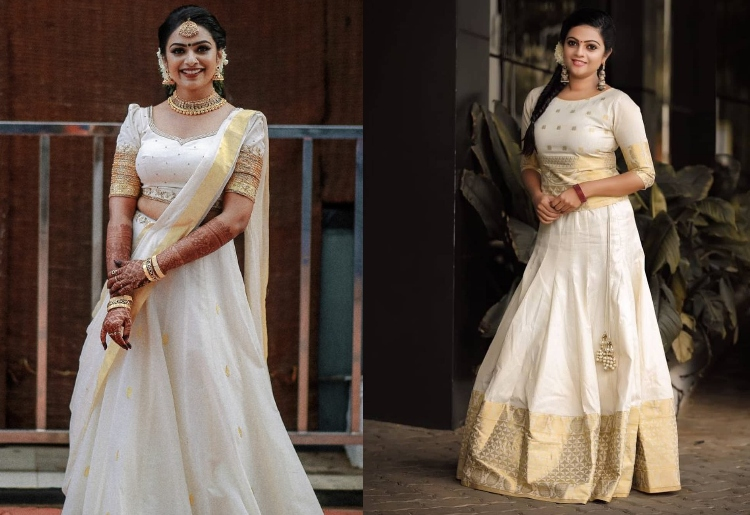
What this is about: This project is for graduate-level fashion designers who have mastery over sewing and using different designing tools. Here, you will design a long, trendy gown from an old saree.
Ways to implement this project:
- You need a saree, measuring tape, a sewing machine, and a fabric marker
- Choose the gown style like A-line, flared gown, or empire waist
- Now, if the saree has embroidery work, you need to choose which part of the design will be the focus of the gown. For example, you can use that fabric for the upper portion of the gown and the sleeves.
- If you already have a dress as a guide, you can put it on the saree, make an outline, and cut out the pieces carefully.
- Sew the front and back body pieces together at the shoulder and sides
- Do applique work using the embroidered fabric on the neckline and sleeves, and add embellishments like beads and laces
- Sew the hemline and attach zippers, hooks, and buttons as required
How to build your fashion design portfolio
To build your fashion design portfolio, you need to follow a few steps. But before tha,t you must know what a fashion portfolio is. It is a collection of your best design work that showcases your experiences, creativity, unique skills, and design approach.
Step 1: Define your objective
Creating a fashion portfolio isn’t just about showcasing your personal brand to attract promising clients. It is required during admission to top fashion colleges and during internships. Whatever the reason, you can curate the resume accordingly.
Planning to get admission to top colleges?
- You must identify the specialization that aligns with your creative angle, like haute couture, sustainable fashion, textile manufacturing, etc.
- Research the admission criteria for the fashion designing college you want to get admission and then create a portfolio.
- Find out the alumni network and analyze their portfolios on different platforms like Behance, Dribble, Pinterest, Slideshare, etc.
Step 2: Put a brief introduction
The first part of your portfolio needs to explain about you within seven lines. It must contain the reason, purpose, and inspiration behind your fashion collections and what the reader can expect to see inside them.
Here’s the first page of a fashion designer portfolio that shows how you can introduce yourself.

Step 3: Add concept mood boards
This page explains the inspiration behind your connection that will help recruiters understand how you work and your creativity scheme. You can add fabric swatches, drawings, pictures, and color and textile palettes.
Here’s what a concept mood board looks like
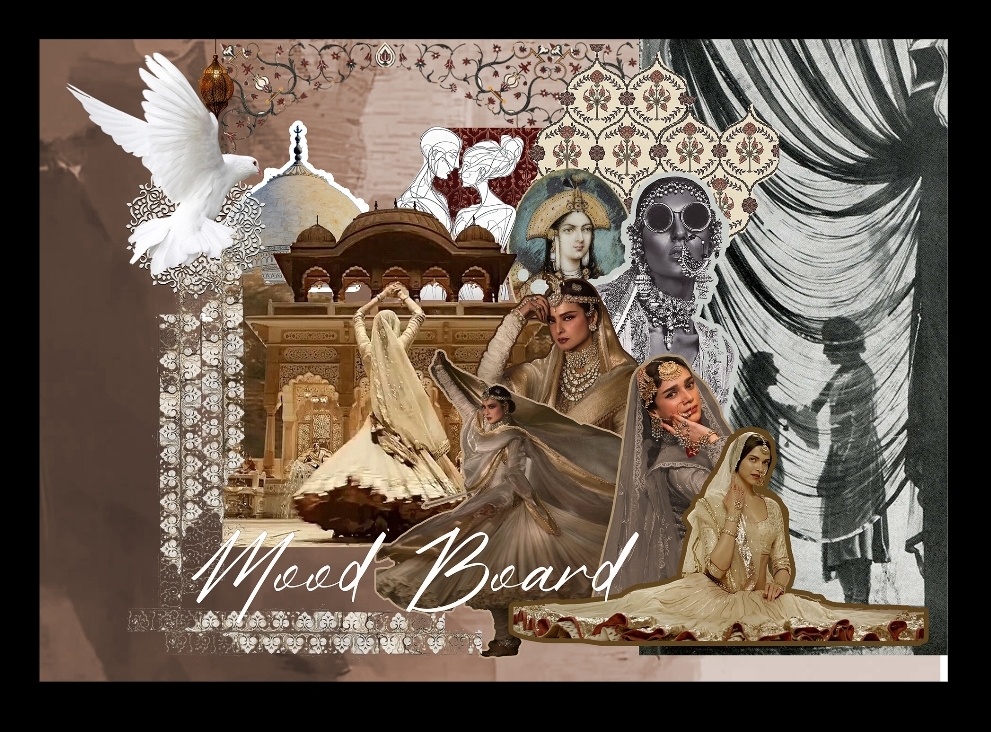
This shows the designer has taken inspiration from the Mughal art and motifs on the Taj Mahal.

Step 4: Showcase your designs
You must showcase your designs as high-quality photos of the final collections. This is the place where you can show your creativity to people. Try using your garments on real models instead of mannequins to look more professional.
Don’t make the portfolio too long; add your most recent works to them. However, freshers or someone applying for a fashion school can add all the work experience they have.
Let us show you an example. Here’s a fashion designer portfolio who wants to showcase a single design for internship opportunities.
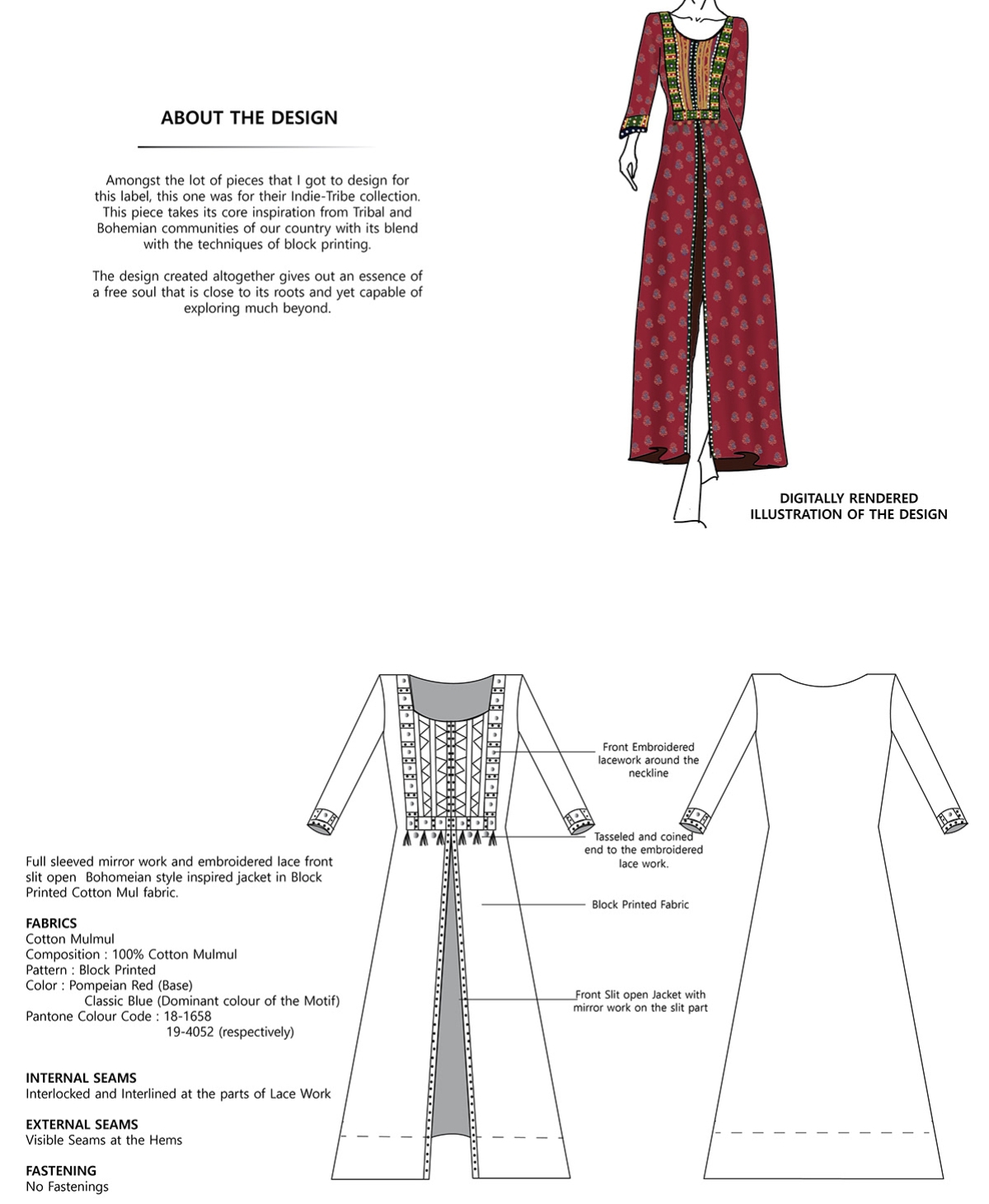

Step 5: Create a portfolio on free platforms
You can choose a platform like Behance to create and host your portfolio and make it available to the public.
- Behance offers you a 15-day trial, and for the Pro version, you have to pay ₹797.68/month, billed annually. Open the application and create a free account.

- Then open your profile on Behance and click on “Work,” where you get to create your portfolio as “Project.”
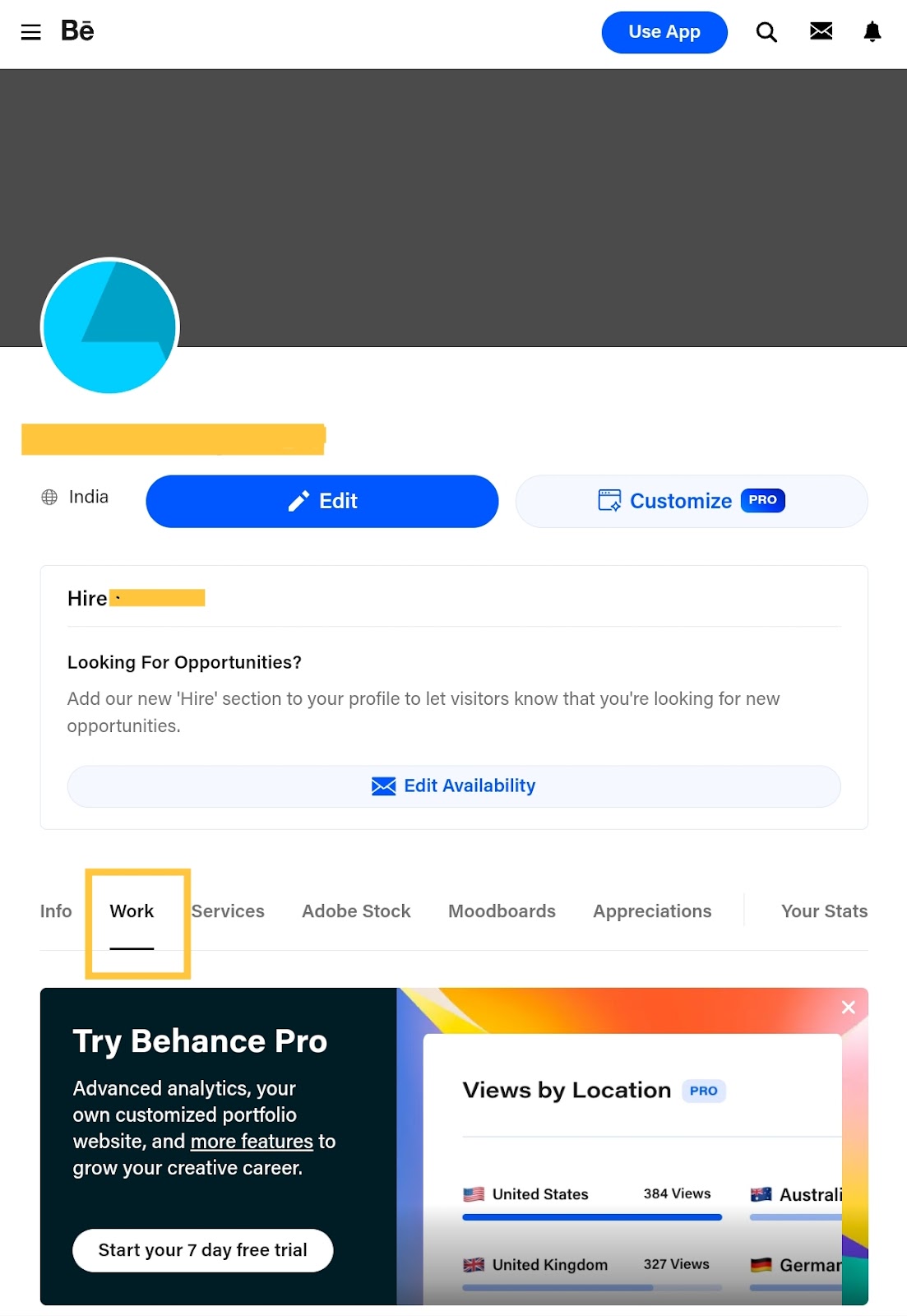

- You can add images, text, and multiple other elements to create a portfolio. Take inspiration from other portfolios hosted on Behance.
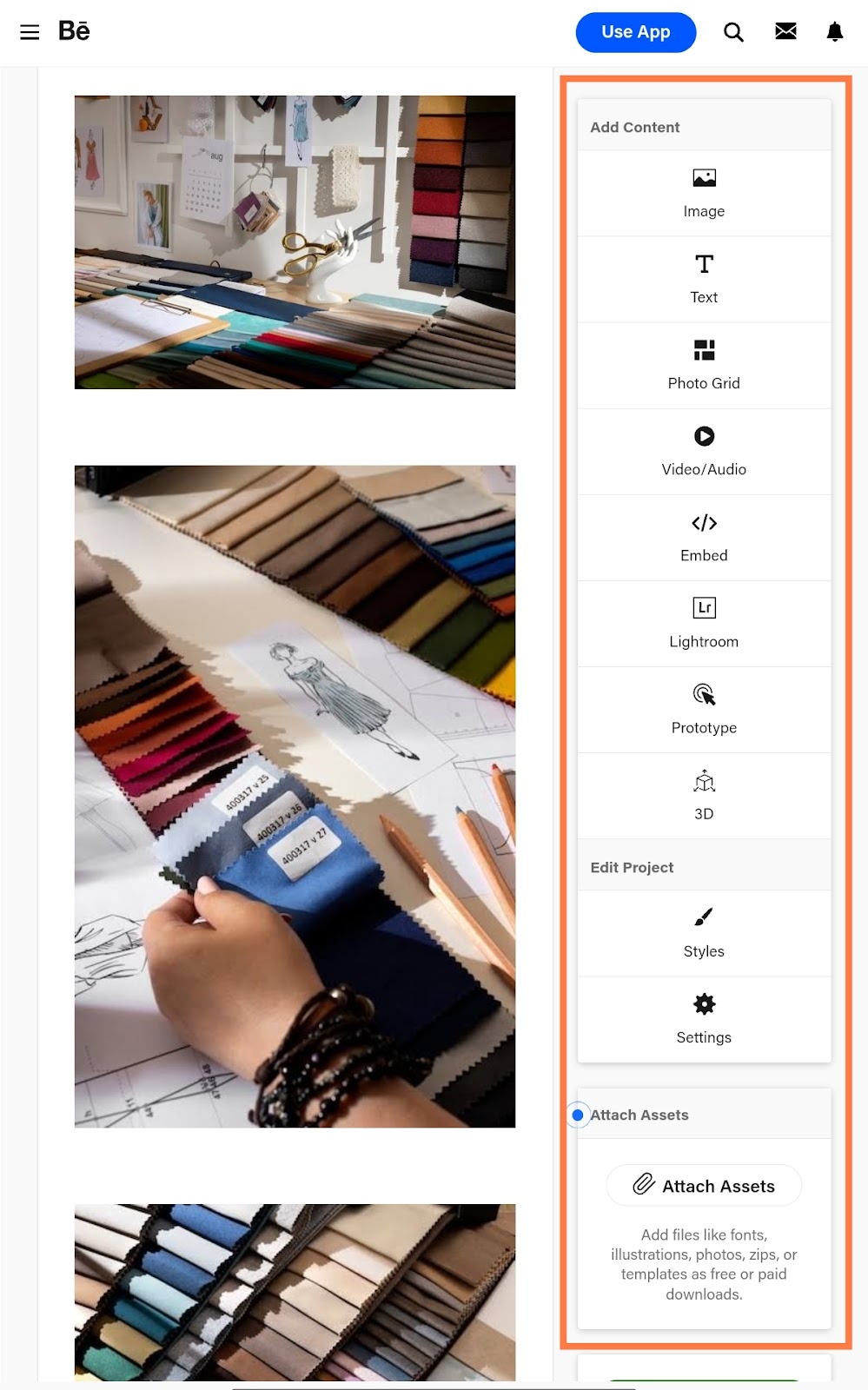
- Once you are done, click on “Continue.”
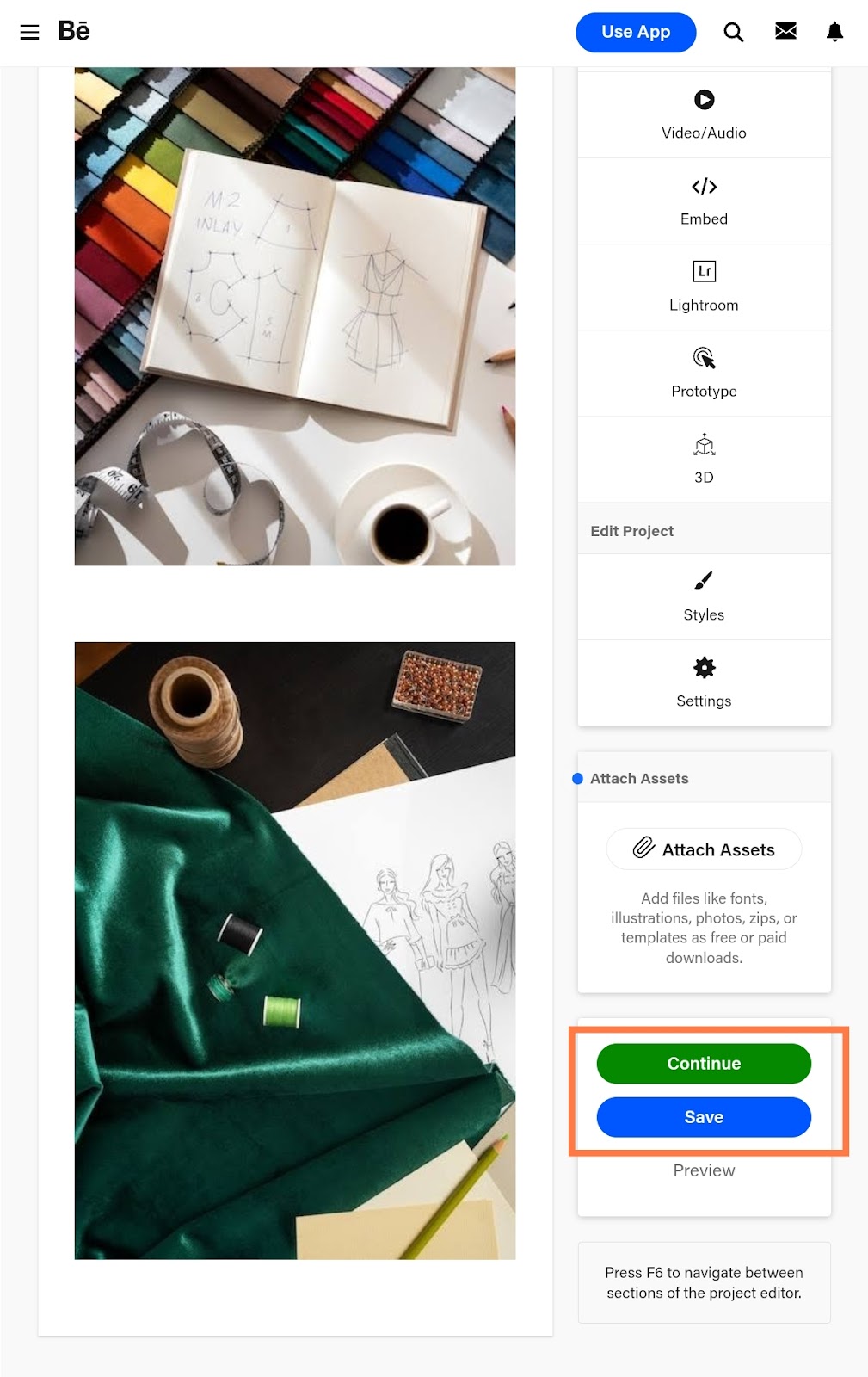
- This page asks you to add an attractive cover photo for your project, give a title, share tools used and other information, and then click on “Publish.”
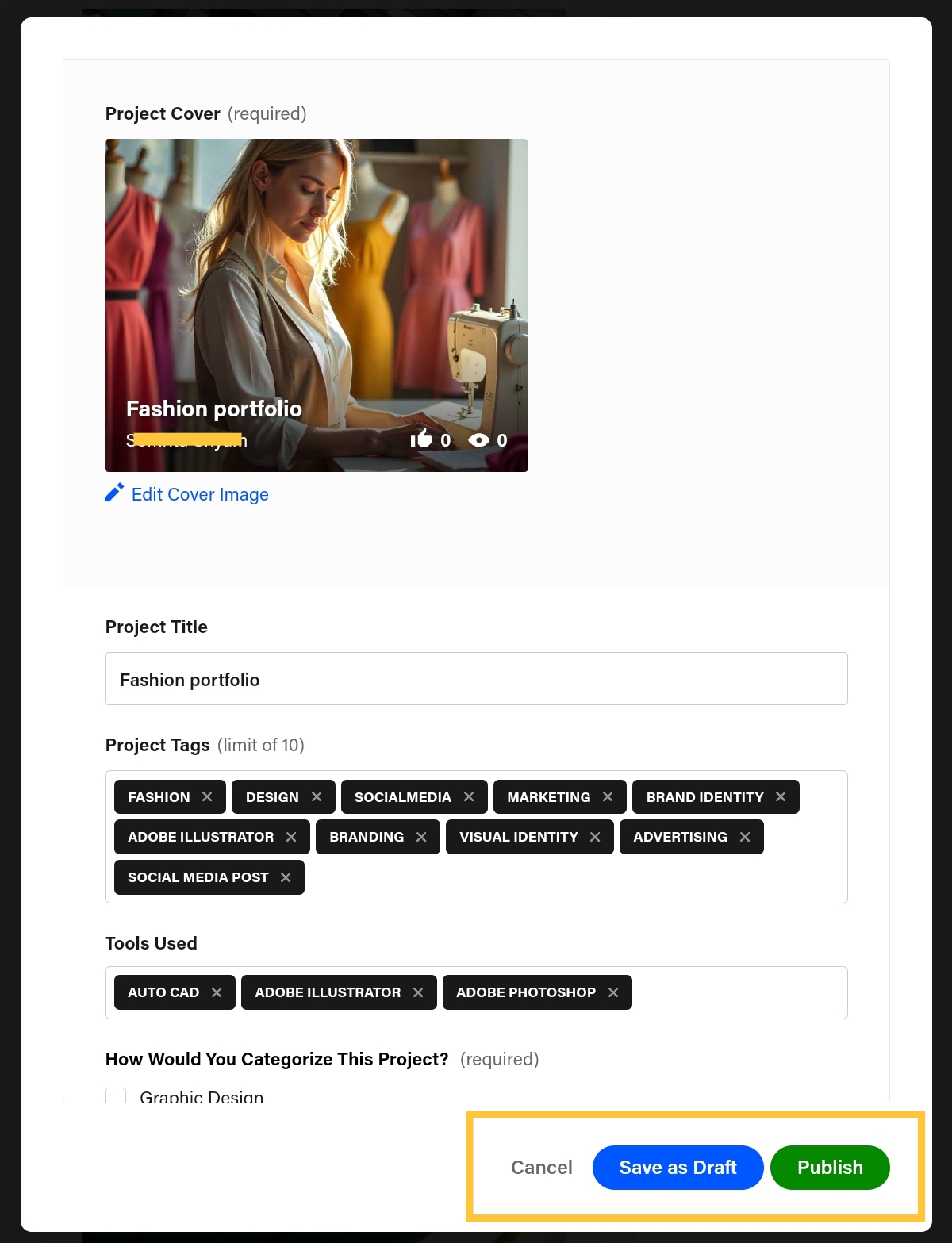
- Your portfolio gets published on Behance and anyone can see that whenever they search for a fashion designer. This is how it looks; it shares your images and other details with the audience.
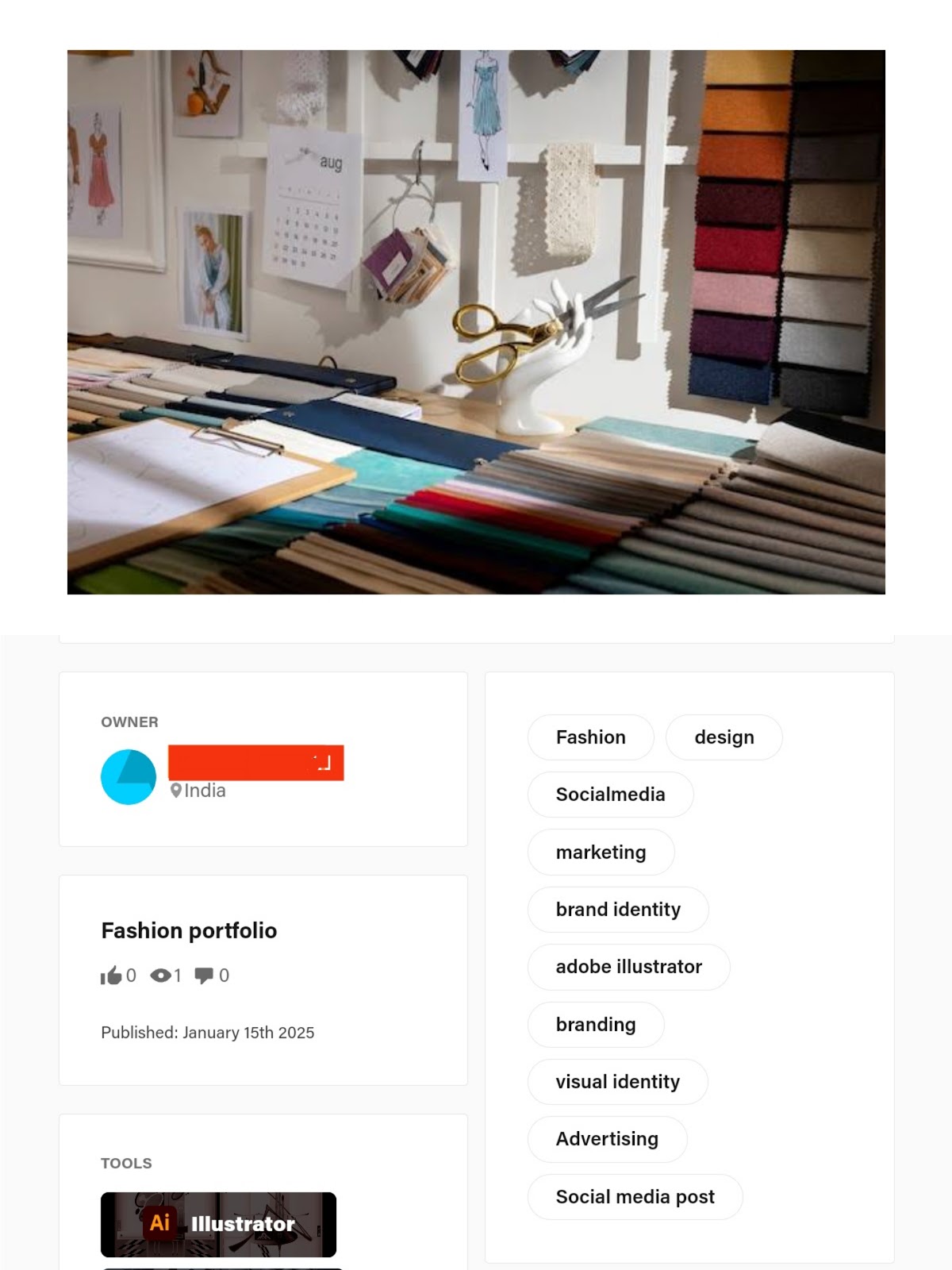
- You can edit, clone, unpublish, promote, or delete the project from your profile. If you unpublish the project, it gets stored on the draft and you can later re-publish it.
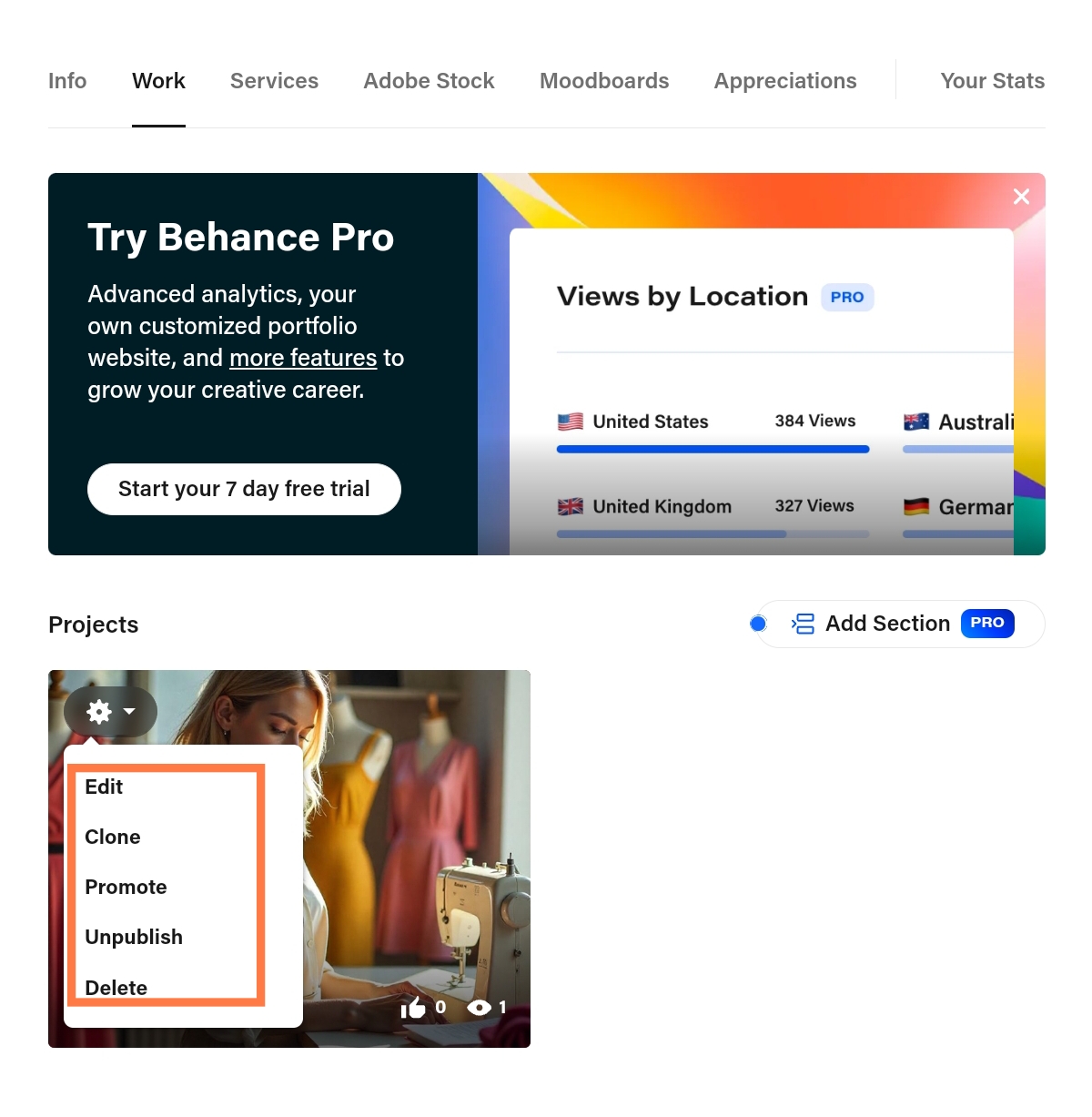
Fashion design portfolio websites
1. Pixpa
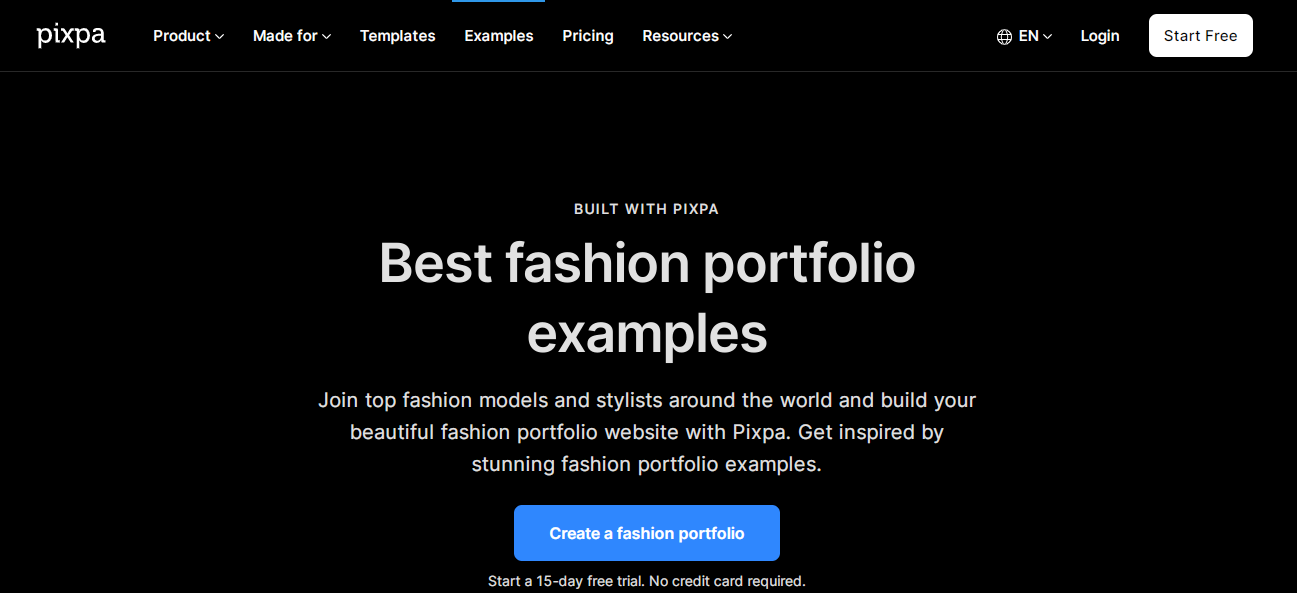
You get 150+ customizable templates to design your fashion portfolio site with Pixpa’s easy-to-use drag-and-drop interface.
Building a fashion portfolio requires inspiration, and you can explore established fashion designer sites on Pixpa and see their presentation styles.
It also offers e-commerce features, blogging, and SEO tools. It means you not only create a portfolio but also have the capabilities to rank high on search engines and reach out to global audiences.
2. Behance

Behance is one of the best platforms for fashion designers to create and host portfolios. It holds a community of 50 million members globally, meaning you are visible to this many people.
It opens your opportunity to get clients and shares its link while applying to top fashion design colleges.
3. Dribbble
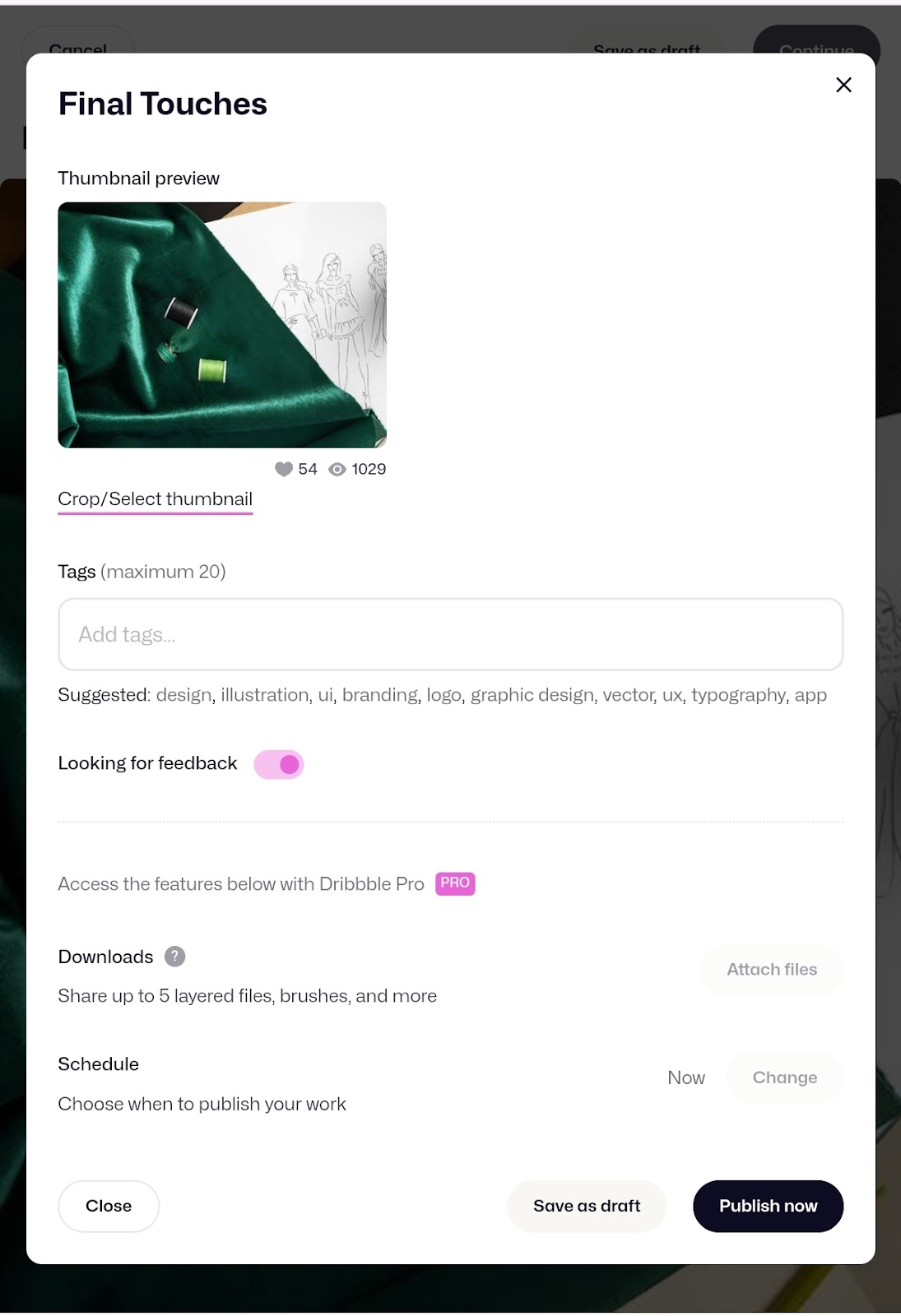
Dribbble is a great platform for fashion designers to share screenshots of their work, boost their design portfolios, and make them look professional.
Besides building a portfolio, you can learn about design fundamentals and read community posts.
4. Format
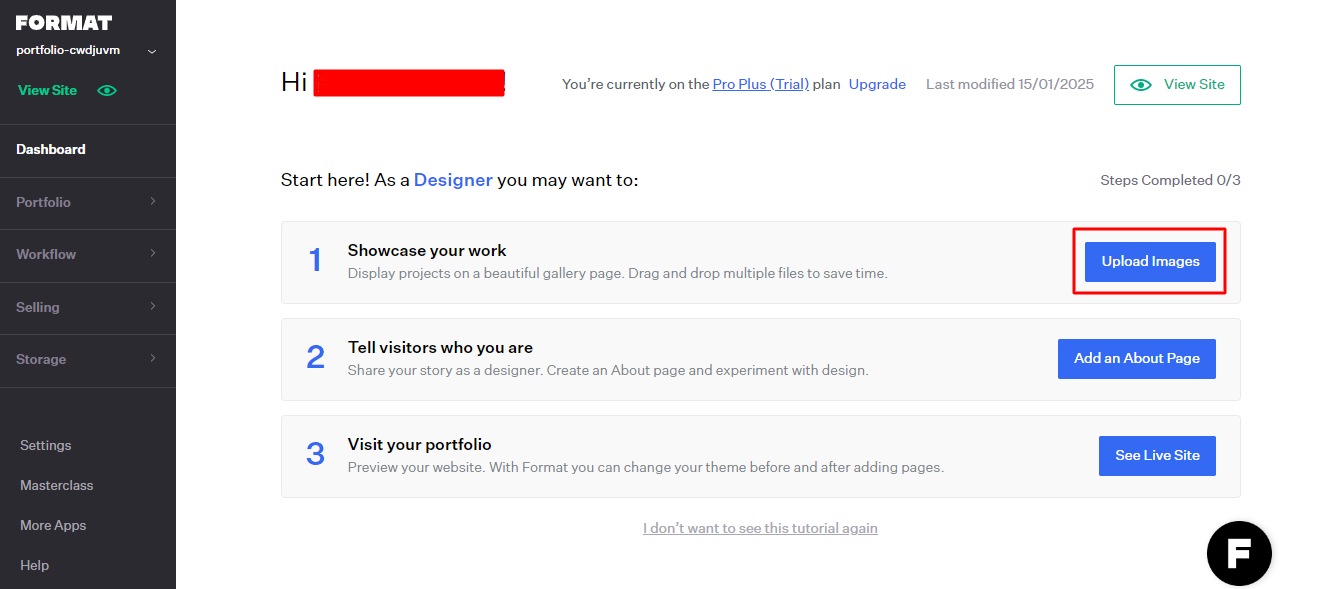
Format provides an easy-to-use drag-and-drop design editor and professionally designed templates to make your portfolio impressive with minimal work.
It is available in 190 countries, and your portfolio will be visible to millions of people searching for fashion designers. It allows you to share your most recent works, which you can submit during a personal interview at a fashion design institute.
5. Wix
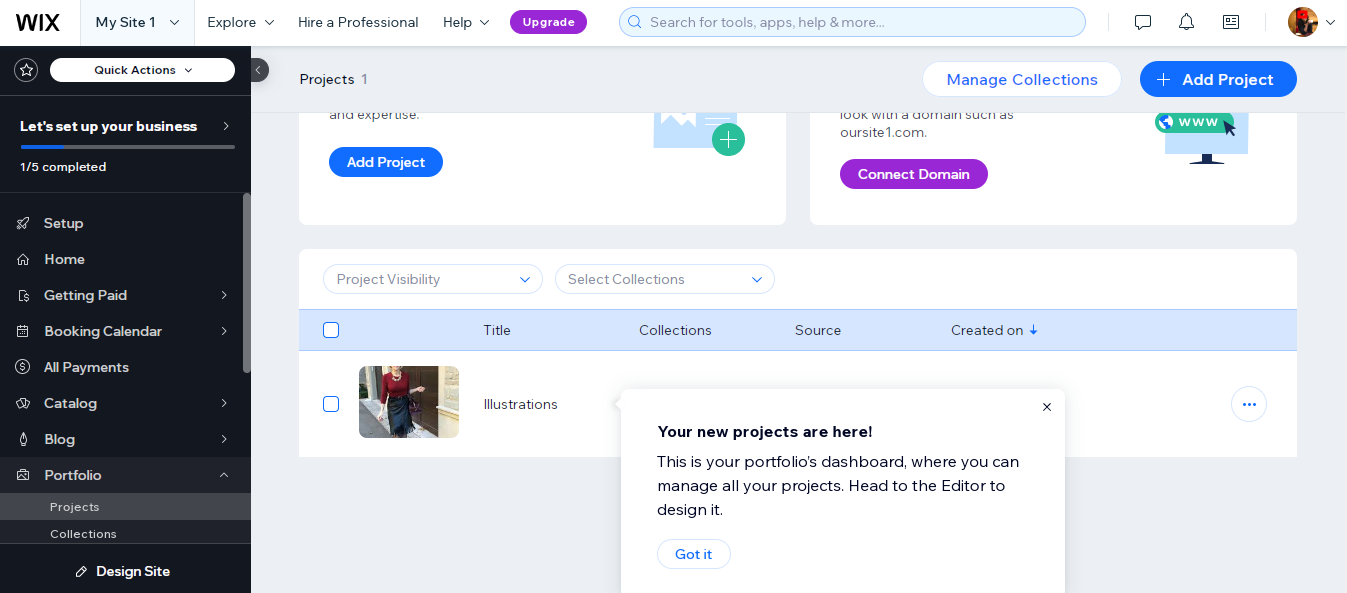
Wix offers a complete solution for building professional fashion design websites. You can find numerous templates for your design portfolio and promote them with Wix tools.
Wix ADI is an Artificial Design Intelligence solution that makes your website creation easier. It has over 200 million users globally, and you can connect with them through Wix and promote your portfolio to a wider audience base.

The KFDI team is a group of fashion education experts and career counselors with 5+ years of experience. We’ve helped over 800 students find the right fashion design courses and build strong careers. Trusted across Kolkata, we offer honest advice, course matching, and placement support—partnering with top institutes to ensure every student succeeds in the fashion industry.

